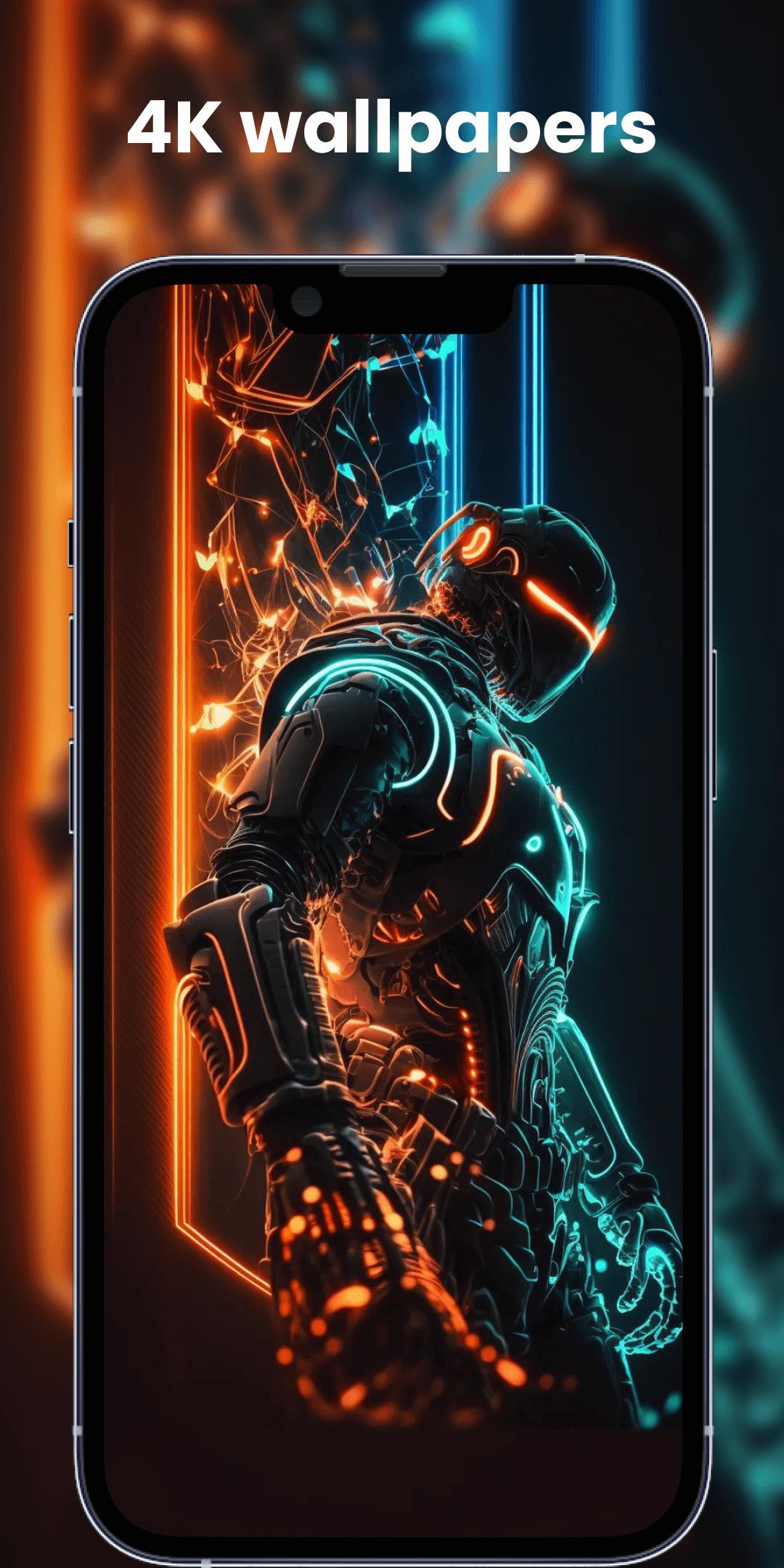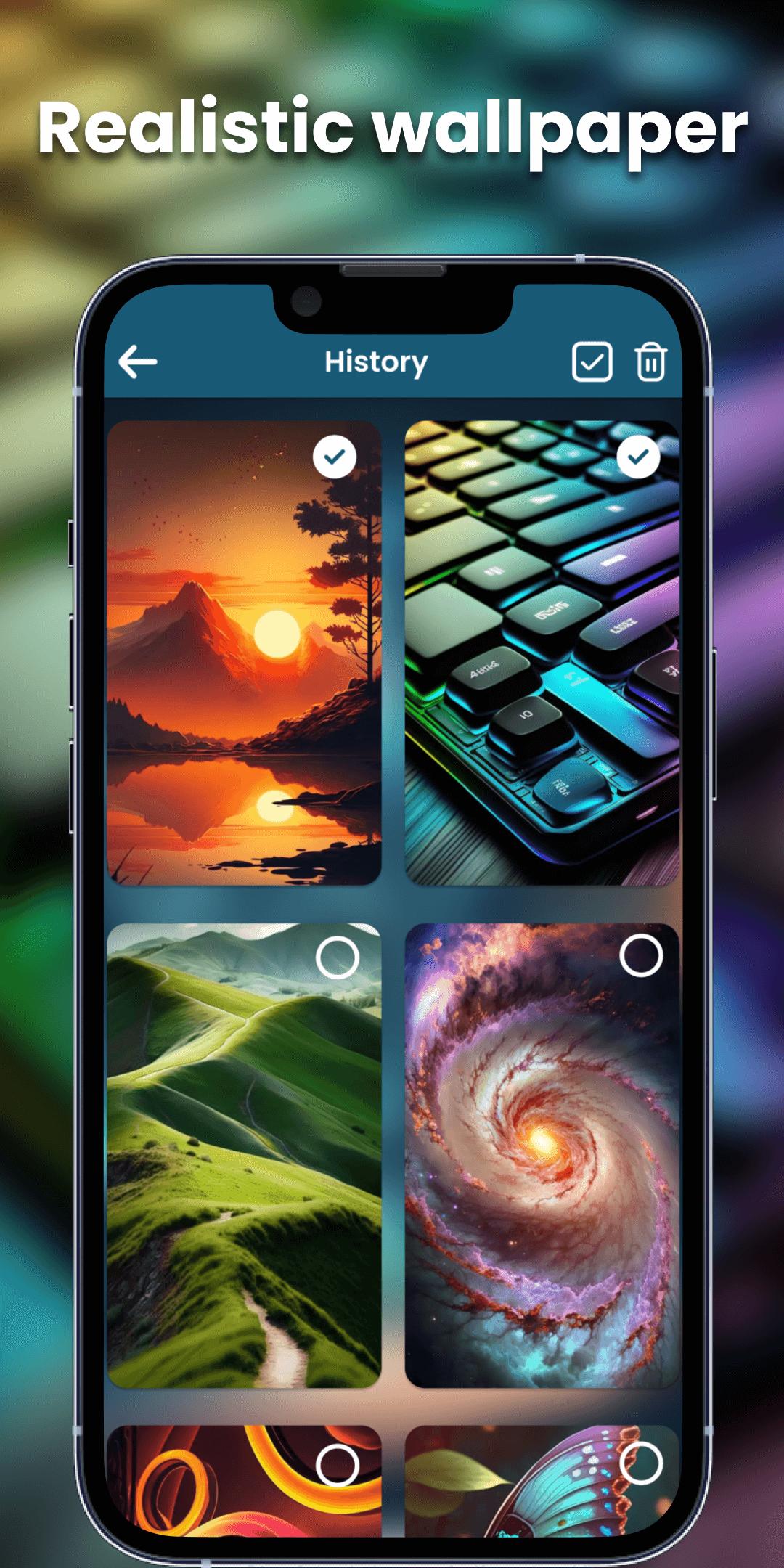When we talk about visual experiences, or maybe even sound, the idea of "high definition" often comes up. It's a phrase we hear a lot, appearing in so many places from the screens we watch to the sounds we take in. You might see it on a television box, or perhaps in the description of a movie you want to stream. This concept of "HD," as it's often called, really just points to a clearer, more detailed way of seeing or hearing things, and it's a big part of how we enjoy digital content these days, more or less.
This notion of "HD" isn't just one single thing, though; it pops up in quite a few different spots, each with its own little meaning or requirement. For example, what makes a television set earn that "Ultra HD" sticker is pretty specific, involving a lot of tiny points of light on the screen. Then, you have the way certain apps, like those for your phone or tablet, might have an "HD" version, which is just a way for the people who make them to tell you it's meant for a bigger screen, or offers a slightly different experience, you know?
And it's not just about what you see. High definition also plays a part in how things sound, like with special audio formats that bring a richer, more complete sound to your ears. Sometimes, even the tools we use to check our computer parts, or the way we connect devices, have a link to this idea of "HD." So, it's really a broad term that covers a lot of ground in our digital lives, actually.
- Johnny Depp Background
- Islah Koren Gates
- Garcia Actress
- What Year Did Whitney Houston Die
- Johnny Depp Nephew
Table of Contents
- What Makes a Display Truly High Definition for HD Hub 4?
- Understanding High Definition Sound for HD Hub 4
- Troubleshooting High Definition Audio Issues for HD Hub 4
- Are All High Definition Tools Equal for HD Hub 4?
What Makes a Display Truly High Definition for HD Hub 4?
When you see a display or a television set with an "Ultra HD" label, it means it has met certain specific requirements. One of the main things is that the screen needs to show at least eight million individual picture elements, which is a lot of detail, actually. This means the picture has a very fine grid of points, giving you a clear and crisp image. This standard helps make sure that when you're watching something, the picture quality is consistently good across different devices, so you know what you're getting, in a way.
This standard for displays also covers how these screens handle their visual information, making sure that even if the screen's basic resolution stays the same, the overall visual experience is something special. It's about delivering a picture that feels more real, with more depth and clarity, giving you a better view of whatever you're enjoying. The aim is to create a viewing experience that feels really immersive, almost like you're there, you know?
Speaking of visual quality, the idea of High Dynamic Range, or HDR, comes into play here, too. When a display has HDR capabilities, and those settings are turned on both on your computer and the screen itself, the picture can look quite different. It means the display can show a much wider range of colors and a bigger difference between the lightest and darkest parts of the picture. This is a big step up from how things usually look, as many displays without HDR might only show a smaller range of colors. The result is a picture that seems to pop more, with colors that feel more alive and shadows that have more depth, which is pretty neat.
How Do Apps Handle High Definition for HD Hub 4?
When it comes to apps, especially those made for phones and tablets, you might sometimes see an "HD" added to the name. For instance, with Apple's own apps for iPads and iPhones, if an app works for both, the download button might have a little plus sign. This "HD" part, though, is something the people who make the app often add themselves. It's their way of letting you know that this particular version is set up for a larger screen, like a tablet, or that it offers a different kind of experience compared to the phone version, as a matter of fact.
This distinction helps users pick the right version for their device, ensuring they get the best visual fit for their screen size. It's a simple way to communicate that the app has been adjusted to look its best on a bigger display, offering more detail or a layout that takes advantage of the extra space. So, it's about making sure the app feels right, whether you're using a small phone or a bigger tablet, basically.
Some platforms, like Bilibili, have their own "HD" versions of apps. You might think that an "HD" version would be bigger in terms of file size, but sometimes it's actually smaller. This isn't really a drawback, though. An app that's only made for tablets, or perhaps focuses on a specific kind of experience, might naturally take up less space than one that needs to work well on both phones and tablets. It's just a different way of building the app, and it doesn't necessarily mean the picture quality or any extra benefits for users are less. It's just a different approach to making software, you know?
Understanding High Definition Sound for HD Hub 4
The term "HD" also applies to how we hear things, especially when we're talking about movies or television shows. "HDTV" is a common phrase, which means "High Definition Television." When you find a movie online that's labeled as an "HD high-definition version," it usually means the sound and picture came from a high-definition television broadcast. This source generally offers a clearer picture and better sound than older, standard definition recordings, so it's a good sign for quality, actually.
This focus on sound quality is a big part of the overall high-definition experience. It's not just about seeing every detail; it's also about hearing every nuance, from quiet whispers to big explosions, with clarity and depth. The idea is to make the sound feel as real and present as the picture, drawing you further into what you're watching. This makes a big difference to how you experience a film or show, as a matter of fact.
What's the Deal with TrueHD and Dolby Atmos for HD Hub 4?
When you get into the specifics of high-quality sound, you'll often come across formats like TrueHD. This is a type of sound that keeps all its original information, meaning nothing is lost when it's saved. Because of this, it uses up quite a bit of digital space, so you'll usually only find it on things like Blu-ray discs. It's a very rich sound format, offering a lot of detail and depth, which is pretty cool.
TrueHD is also important because it's the basis for another very advanced sound system called Dolby Atmos. This means that if a movie's sound is in Dolby Atmos, it often uses TrueHD as its core. So, sometimes, if you see "TrueHD" listed in a file's name, it might also mean that the sound can light up your system with the full Dolby Atmos experience. This kind of sound can make it feel like noises are coming from all around you, even from above, giving you a truly immersive listening experience, as a matter of fact.
The aim with these sound formats is to go beyond just clear audio. They want to place you right in the middle of the action, making you feel like you're truly there. Whether it's the subtle rustle of leaves or the roar of a crowd, these formats try to reproduce sound in a way that feels incredibly lifelike. It's about bringing a whole new level of realism to your home entertainment, you know?
Troubleshooting High Definition Audio Issues for HD Hub 4
Sometimes, even with all this talk of high-definition sound, things can go wrong. For example, if you've just put a new operating system, like Windows 10, on your desktop computer, you might find that the headphone jack on the front of your computer case isn't making any sound. This can be really frustrating, as a matter of fact, and you might spend a whole day trying different things you find online, but nothing seems to work.
One common problem people run into is not being able to get the Realtek high-definition audio settings to show up. This particular piece of software is often in charge of managing your computer's sound, and if it's not working right, you won't hear anything. After a lot of trying, though, people often find a way to fix it, perhaps by using a tool that checks for missing or old computer programs, which can help get everything back in working order. It's a relief when you finally hear sound again, that's for sure.
Dealing with sound problems on a computer can feel like a real puzzle. There are so many small parts that need to work together just right, from the computer's internal programs to the physical connections. When one piece isn't quite right, the whole thing can stop working. But with a bit of patience and some careful checking, most sound issues, even those related to high-definition audio, can usually be sorted out, so it's not hopeless, you know?
Are All High Definition Tools Equal for HD Hub 4?
When it comes to tools that help manage or check your computer's parts, especially hard drives, not all are equally effective. Take HDTune, for example. From some people's experience, it's considered a pretty basic tool. It can do a quick check for simple problems on a hard drive, like a few bad spots, but if the problem is a bit more involved, it might not be able to handle it. It's good for a quick look, but perhaps not for deeper issues, basically.
There was a case with a small, mechanical hard drive, just 1.8 inches, made by Samsung. It worked really well for a few years, but then, perhaps because of dust or just getting older, it started having issues. A simple tool like HDTune might not have been enough to figure out what was really going on with it. This just goes to show that while some tools are helpful for everyday checks, you might need something more specialized for more serious problems. It's like having a basic wrench versus a whole set of tools, you know?
The effectiveness of a tool often depends on what you're trying to do. For quick scans and simple fixes, a straightforward tool can be perfectly fine. But for more complex situations, where you need to really dig into what's happening with a piece of hardware, you might need something with more features or a more detailed way of looking at things. It's about matching the right tool to the job, which is pretty important.
What About High Definition Connections for HD Hub 4?
Connecting your high-definition devices also involves specific types of cables and ports. HDMI, for instance, came about in 2002. A group of television makers, including Sony, Panasonic, and Philips, got together to create a single way to connect all the different home entertainment devices. This was a big step towards making it easier for people to set up their systems, as a matter of fact.
Before HDMI, you might have needed several different cables for video and audio. HDMI brought it all into one cable, making connections simpler and cleaner. It was designed to carry high-definition video and audio signals all at once, making it a very convenient way to link up things like your Blu-ray player to your TV, or your computer to a monitor. This unified approach really helped to tidy up the back of your entertainment center, you know?
Another aspect of digital connections involves what are called magnetic links, or magnet links. These links use specific identifiers to point to digital content. For example, "xt:exact topic" is a short way of saying "resource location point." Then there's "BTIH," which stands for "BitTorrent Info Hash." This "hash" is like a unique fingerprint for a file, and it's absolutely necessary for finding that file online. Other ways to create these fingerprints exist too, like SHA1 and MD5, but the idea is always to have a unique marker for the file. This system helps people find and share digital content reliably, which is pretty clever.
What Does "HD" Mean in Older Games for HD Hub 4?
Even older computer games sometimes get an "HD" version. For example, a particular "HD version" of a game might only include one specific part of the story, like the "Restoration of Erathia" campaign. This campaign actually picks up right after the events of an earlier game, which was known for having a story that was short but very impactful. It told the whole tale with very few words, which is kind of unique.
The story in this game begins with a king being poisoned by someone who follows a certain magical belief. So, the "HD" label here might not mean better graphics in the modern sense, but perhaps just a re-release or a specific edition that focuses on certain content, or maybe has been slightly updated to work on newer systems. It's a different kind of "HD" compared to what we usually think of for displays or audio, but it still points to a specific version of something, you know?
This shows that "HD" can be a very flexible term. In the world of older games, it might simply mean a particular collection of content, or a version that has been made compatible with more recent computer setups. It’s not always about making the visuals look completely new, but rather about making the game accessible or presenting a specific part of its history. It's a way to keep older favorites alive for new players, which is pretty cool.
Related Resources:



Detail Author:
- Name : Estel Fahey
- Username : foster44
- Email : ona.senger@gmail.com
- Birthdate : 1988-11-16
- Address : 78572 Mills Mills Apt. 926 South Destany, NY 29791
- Phone : +15179042961
- Company : Hartmann, Murphy and Luettgen
- Job : Chiropractor
- Bio : Unde sunt aut sint atque in commodi ut ipsa. Fugiat et quia placeat accusantium qui atque. Qui quia mollitia dolores in eveniet. Libero sapiente assumenda rerum deserunt quis.
Socials
twitter:
- url : https://twitter.com/karlee3181
- username : karlee3181
- bio : Impedit quia officiis magnam quaerat porro. Modi sint laboriosam et. Eveniet perferendis aut dolores reprehenderit quo.
- followers : 1765
- following : 1983
linkedin:
- url : https://linkedin.com/in/karlee7373
- username : karlee7373
- bio : Ut eos reprehenderit est vero.
- followers : 468
- following : 768
instagram:
- url : https://instagram.com/karlee.grimes
- username : karlee.grimes
- bio : Nam ipsa dolore perferendis iste. Ut maiores reprehenderit cum.
- followers : 6056
- following : 2762
tiktok:
- url : https://tiktok.com/@karlee_dev
- username : karlee_dev
- bio : Sed id facere ea sint repellat.
- followers : 6038
- following : 618
facebook:
- url : https://facebook.com/karlee_grimes
- username : karlee_grimes
- bio : Officia id quod placeat consequuntur commodi qui facilis.
- followers : 1592
- following : 2844